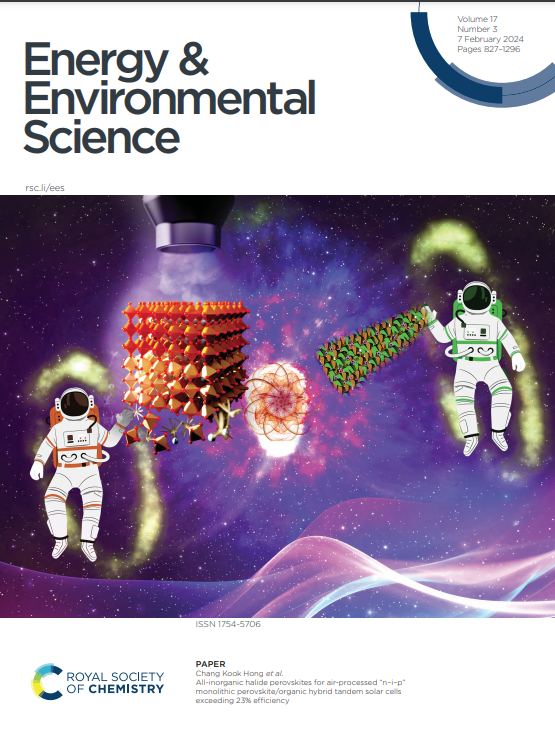Insights into catalyst degradation during alkaline water electrolysis under variable operation
IF 32.4
1区 材料科学
Q1 CHEMISTRY, MULTIDISCIPLINARY
引用次数: 0
Abstract
Energy conversion technologies that are key to decarbonization efforts face significant durability challenges due to variable operation. Understanding the impact of variable operation on catalytic stability and identifying the key variables that dictate degradation is crucial for developing robust technologies. Here, we present a comprehensive investigation of the effects of variable operation on liquid alkaline water electrolysis. Our findings reveal that variable operation induces severe degradation of Ni, Fe, and Co catalytic films that is not observed during steady-state operation. By systematically interrogating the electrode discharge during simulated shutdown tests using Raman spectroscopy and mass spectrometry techniques, we uncover significant alterations caused by reverse currents in real time. These include changes in crystal structure, composition, film thickness, electronic conductivity, and dissolution rates. Lab-scale electrolyzer experiments further highlight the impact of variable operation on catalyst materials under industrially relevant conditions. Finally, we provide guidelines for leveraging these insights to advance electrocatalysis research. This work underscores the importance of integrating realistic stressors into stability testing and offers practical guidelines for catalyst design, performance evaluation, and industrial implementation. Collectively, insights from this study will drive the development of more resilient energy conversion technologies.不同操作条件下碱性电解过程中催化剂降解的研究
能源转换技术是脱碳工作的关键,由于操作的变化,其耐久性面临重大挑战。了解不同操作对催化稳定性的影响,并确定决定降解的关键变量,对于开发可靠的技术至关重要。本文对不同操作方式对碱水电解的影响进行了全面的研究。我们的研究结果表明,可变操作诱导Ni, Fe和Co催化膜的严重降解,这在稳态操作中是没有观察到的。通过使用拉曼光谱和质谱技术系统地询问模拟关闭测试期间的电极放电,我们实时发现了反向电流引起的显著变化。这些变化包括晶体结构、组成、薄膜厚度、电子导电性和溶解速率的变化。实验室规模的电解槽实验进一步强调了在工业相关条件下可变操作对催化剂材料的影响。最后,我们提供了利用这些见解来推进电催化研究的指导方针。这项工作强调了将现实压力源整合到稳定性测试中的重要性,并为催化剂设计、性能评估和工业实施提供了实用指南。总的来说,这项研究的见解将推动更具弹性的能源转换技术的发展。
本文章由计算机程序翻译,如有差异,请以英文原文为准。
求助全文
约1分钟内获得全文
求助全文
来源期刊

Energy & Environmental Science
化学-工程:化工
CiteScore
50.50
自引率
2.20%
发文量
349
审稿时长
2.2 months
期刊介绍:
Energy & Environmental Science, a peer-reviewed scientific journal, publishes original research and review articles covering interdisciplinary topics in the (bio)chemical and (bio)physical sciences, as well as chemical engineering disciplines. Published monthly by the Royal Society of Chemistry (RSC), a not-for-profit publisher, Energy & Environmental Science is recognized as a leading journal. It boasts an impressive impact factor of 8.500 as of 2009, ranking 8th among 140 journals in the category "Chemistry, Multidisciplinary," second among 71 journals in "Energy & Fuels," second among 128 journals in "Engineering, Chemical," and first among 181 scientific journals in "Environmental Sciences."
Energy & Environmental Science publishes various types of articles, including Research Papers (original scientific work), Review Articles, Perspectives, and Minireviews (feature review-type articles of broad interest), Communications (original scientific work of an urgent nature), Opinions (personal, often speculative viewpoints or hypotheses on current topics), and Analysis Articles (in-depth examination of energy-related issues).
 求助内容:
求助内容: 应助结果提醒方式:
应助结果提醒方式:


